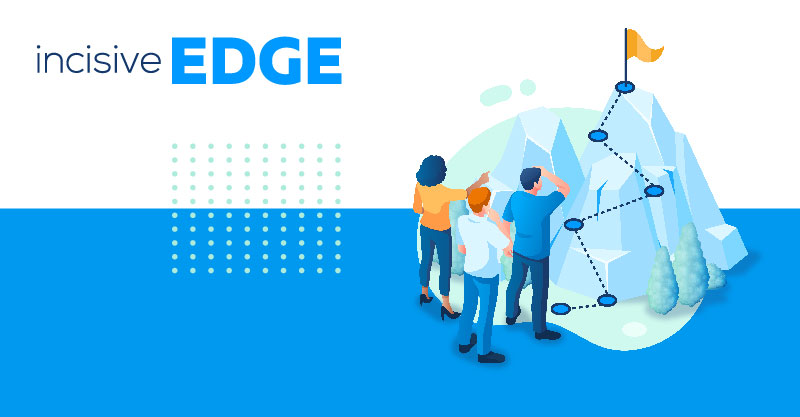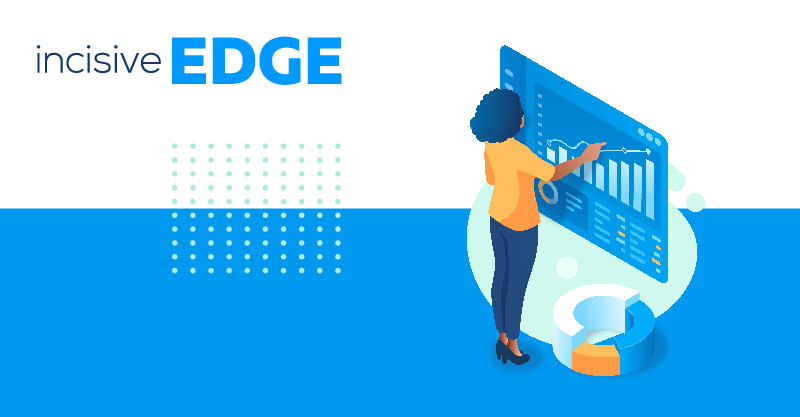From marketing automation to chatbots and now the Internet of Things (IoT) – technology, it seems, is forever disrupting marketing and it can be hard to evolve a content strategy fast enough to keep up.
The way we communicate and engage with our target audiences is in a permanent state of evolution. It wasn’t so long ago that simply having a blog was the most important part of a content strategy – then social media marketing exploded, then video marketing, then messaging apps and chatbot marketing, and then, and then, and then….
We've now once again reached one of those moments in marketing history where the increasing proliferation of internet-connected devices, including numerous IoT devices, is poised to revolutionize consumer content consumption. This includes the emerging technologies of Industrial IoT and machine learning. Therefore, it is crucial to develop a content strategy that can effectively embrace and capitalize on these advancements.
The technology in question is the Internet of Things – but what is it exactly?
Check out the following blogs to learn more about content strategies:
- How to tell if you need a more aggressive Content Strategy?
- How To Adopt a Great Editorial Content Marketing Mindset
- Editorial workflow: How to Revitalise Your Content marketing
- Content Branding: The Complete and Improved 2022 Guide
What is the Internet of Things?
The IoT basically describes the ever-expanding network of “things” – i.e. physical objects: devices, home appliances, cars, coffee pots, fridges, watches, you name it! – that are embedded with electronics, software and sensors that allow them to connect with the internet and exchange data. IoT devices just like smart devices have a pivotal role in society today. These connected devices have changed the way we do things. From having your lights turned on via voice command, all the way to use smart objects like a vacuum with the touch of a button and IoT sensors to guide it based on previous instructions.
It’s the connected world, in other words – and the number of “things” being connected is growing at a very fast pace. In 2005 there were a pretty impressive 500 million things that were connected to the internet. By 2020 (in just two years’ time!) there will be 50 billion.
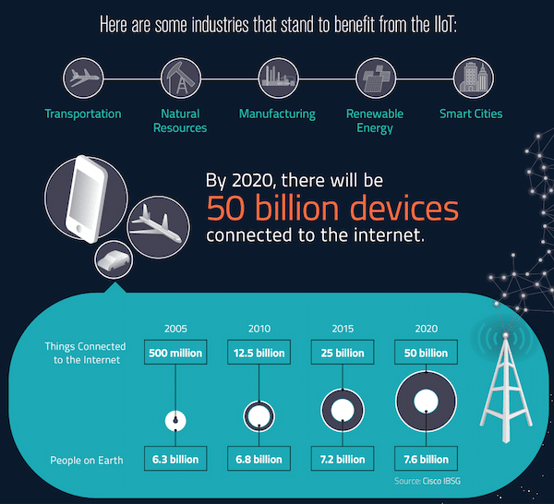 (Image source: visualcapitalist.com)
(Image source: visualcapitalist.com)
IoT device management allowed us to have an entire ecosystem of devices working in perfect synergy. Already today, it's become commonplace for our phones to “talk” to our tablets and desktop computers – and if you've got a smartwatch, it will be talking to that, too.
Smart TVs are proliferating, and with items like the Amazon Echo beginning to take off in a big way, it’s not hard to imagine just how close we really are to a futuristic world where practically everything is connected in one way or another. Some concerns are raised like how these devices and IoT systems collect data. Most IoT applications allow you to choose whether you want to consent to the sharing of your IoT data. However, unfortunately, most people simply accept it without proper review.
What Does the Internet of Things Mean for Your Content Strategy?
It might seem like content marketing would be one of the last things to be affected by the IoT System revolution. But in fact, it may be one of the first, as it will change the way we both create and consume content.
Indeed, we can hardly talk about the Internet of Thing without mentioning consumer IoT devices like the smart fridge.
Let's consider a scenario that involves IoT security, IoT networks, and the physical world. You go to the supermarket and pick up groceries like potatoes and chicken, paying for them using your smartphone, which connects to the secure IoT network. Upon arriving home, you place the items in your smart fridge, which utilizes IoT security measures to protect its network connectivity. The smart fridge automatically scans its contents and reports the information to your tablet on the kitchen table. Your tablet, connected to the IoT network, securely receives the data and maintains a record of your recent purchases. It leverages the IoT network to search the web for recipes based on the available items, while ensuring the security of the network connections involved. Additionally, taking into account the approaching use-by-date of the ingredients, it provides "smart" suggestions using IoT network data.
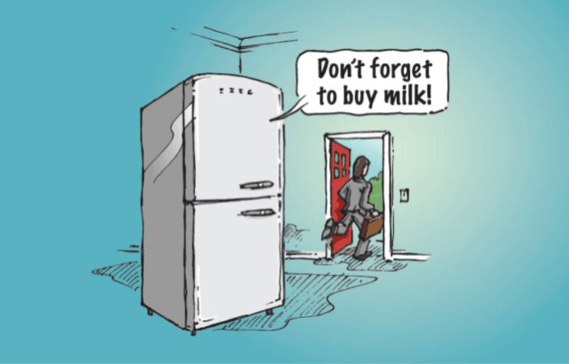 (Image source: information-age.com)
(Image source: information-age.com)
Now, if you were an ecommerce player in the business of selling kitchen gadgets and cookbooks and whatnot, publishing recipes on your website and Pinterest page would likely be part of your ongoing content strategy. And in the world of the Internet of Things, it will be devices themselves that retrieve this content on behalf of users, as and when those devices “think” it would be most appropriate to do so. The creation of an IoT platform to control everything from the aforementioned sensor data to other IoT applications was a game changer. They can now be used on home, industrial devices and more. That has implications for the types of content you create for personalisation and indeed for SEO.
Indeed, one of the most important things to think about in terms of your content strategy and the IoT is the sheer amount of data that will become available as more and more things are connected.
In the context of the ecommerce kitchenware example, it's important to note that your customers possess many IoT devices, including smart fridges, security systems, and connected devices. Additionally, in the near future, there will be smart store cupboards, ovens, toasters, and coffee pots. Considering this, your content strategy should prioritize supreme personalization. By leveraging the data from these IoT devices, you can create tailored content such as recipes, nutritional information, dinner party planning, and kids' packed lunches based on the specific food items available in each individual's house.
It might all seem a little far-fetched at the moment and there are of course data privacy concerns that will need to be addressed and balanced out – but the technology really isn’t that far off.
In fact, take a look at this short video from Campbell’s Kitchen – the company’s forthcoming app for Amazon Echo seems pretty close to the scenario outlined above.
SEO and the Internet of Things - Voice Search
The realms of supper recipes and smart fridges may of course be a world away from your business. However, what we all need to take note of – no matter what industry we're in – is how search is evolving and will continue to evolve as IoT applications, tools and systems take hold.
Particularly, voice-search is going to continue to impact SEO. Indeed, it may be slow, but the way people are searching for online information is gradually changing. Apple’s Siri has been around for a while and there are several alternatives for Android. With the likes of Amazon Echo and the growing proliferation of IoT-enabled devices in general, voice-search is only set to become more significant – that means marketers will have to optimise for voice-search as part of an ongoing, forward-thinking content strategy.
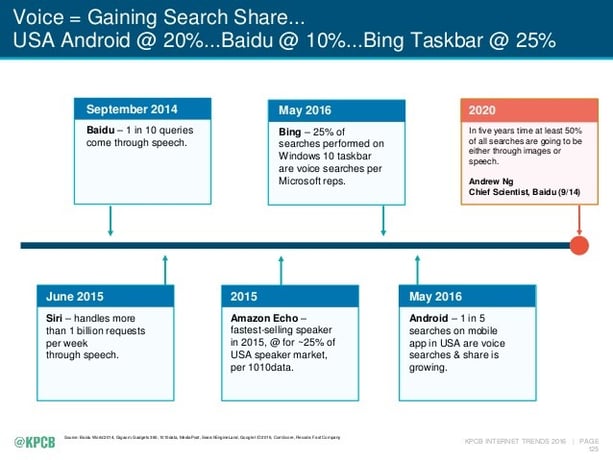 (Image source: slideshare.net)
(Image source: slideshare.net)
Optimising your content for voice-search means understanding how it’s different from text-search.
Googlers are pretty good these days at keeping queries short, only entering the specific keywords and keyword phrases that they know will bring them the results they’re looking for. Typically, text-searchers use about two words to express their search intent.
However, according to data published in Moz, voice-searchers, though still keeping things relatively short, tend to use longer phrases when conducting a query.
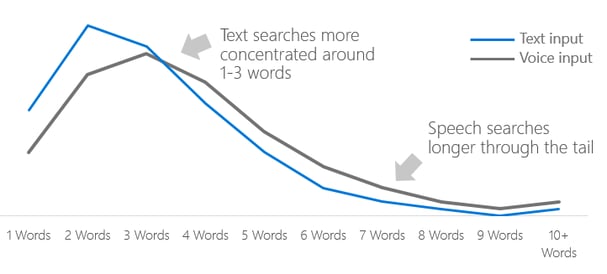 (Image source: moz.com)
(Image source: moz.com)
When people conduct a voice-search, they are more conversational and, as such, this means that in order to do SEO in the age of the IoT, you’ll need to be including conversational keyword phrases in your content to increase the chances of your content showing up.
Just the Tip of the Iceberg
The Internet of Things will be huge to connect devices. There are no ifs or buts about it – the IoT is coming and over the next few years, it will continue to affect digital marketing, which means that we all need a content strategy that can keep up.
What we’ve touched on here is just the very tip of the iceberg. Beacon and location technology, for instance, will continue to allow marketers to serve up personalised content to smartphone users when they are physically present in certain places. Wearable technology, too, will create even more opportunity for content marketers. In short, the IoT will quite literally change the world we live in, and so we need a content strategy that can change with it.
If you need help developing a content strategy for the IoT, get in touch with the inbound marketing experts here at Incisive Edge today.
